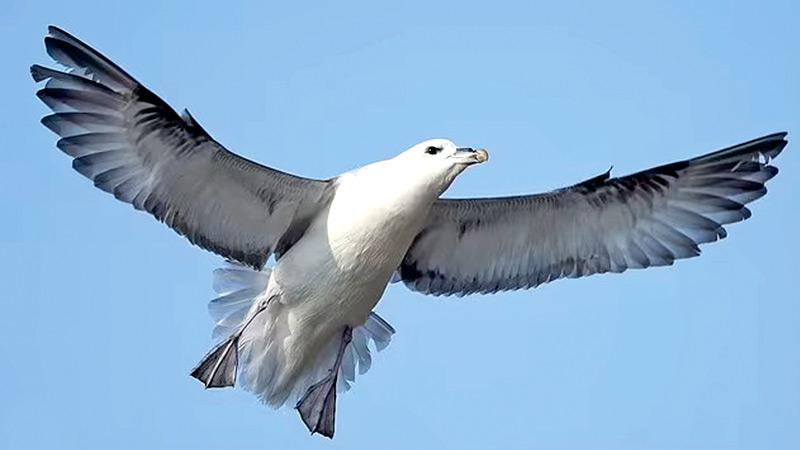
A seabird found on an uninhabited island in Orkney is the oldest of its kind, experts said.
The fulmar – a type of tube-nosed seabird – was born in July 1975 and spotted almost half a century later on the island of Eynhallow, said the British Trust for Ornithology.
Researchers were able to work out its age thanks to a numbered ring that was fitted to its leg by a volunteer back in 1975, when the bird was still a fledgling on Eynhallow.
It was spotted again on June 5, 2021, when the ring number revealed that the bird had reached 45 years, 9 months and 12 days old. If it is still alive, it will now be 47.
The time between ringing and being re-sighted is a new record for the fulmar, which is known for mating on cliffs and spitting out foul-smelling oil to defend its nest.
A fulmar first breeds when it is between six to 12 years old. It frequently returns to the nesting site where it first hatched.
Fulmars are said to have an average lifespan of 30 years, although some sources claim they can reach as old as 60 years. British Trust for Ornithology (BTO) said this is the oldest known British fulmar to have its age confirmed.
The new record is one of many published in the latest ringing report from the BTO, which warns that fulmars are particularly threatened by avian influenza, otherwise known as bird flu.
Seabirds tend to be long-lived and slow to reproduce – a fulmar, for instance, might be as old as 12 years before it lays its first egg.
Breeding attempts
Even then, early breeding attempts are less likely to be successful, meaning it can take a very long time for populations to recover from disease.
‘Britain and Ireland’s seabird populations are of global importance,’ said Dr Dave Leech, head of the British and Irish Ringing Scheme at the BTO.
‘Volunteer bird ringers participating in the BTOs Ringing Scheme play a fundamental role in the monitoring work that underpins conservation efforts.
‘With avian influenza now adding to the significant, existing environmental pressures posed by changes in climate and habitat quality, the dedication of these highly skilled volunteers is more important than it ever has been and we are immensely grateful for their incredible contribution.’
Related to the massive albatross, the fulmar is a gull-like, tubenosed seabird that nests on rocky cliff edges.
Despite their gull-like appearance, fulmars belong to the ‘tubenoses’, a family of birds that includes shearwaters, petrels and albatrosses.
The ‘tubes’ on these birds’ bills allow them to excrete salt from the seawater they drink.
Two living species
There are two living species of fulmar – the Northern fulmar (Fulmarus glacialis), which is widespread across the oceans of the Northern Hemisphere, and the Southern fulmar (Fulmarus glacialoides), around Antarctica and the Southern Ocean.
This rediscovered bird from Eynhallow is a Northern fulmar (Fulmarus glacialis).
Around 350,000 pairs of fulmar breed on cliffs around the UK coastline and spend the winter out at sea.
According to the RSPB, the fulmar is abundant along Scottish coastline, especially on the Northern Isles, and least common along the East, South and North-West coasts of England.
Scottish Wildlife Trust said they can be seen between April and early September on breeding cliff sites.
Scotland is home to around 97 percent of the UK population of Northern fulmars, the Trust adds, although since the mid to late 1990s records indicate a decline in numbers.
- Daily Mail
